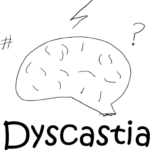Watch episode 17 on YouTube
Liana McCurry

Liana McCurry is passionate about improving math learning outcomes for students. She teaches using Explicit Direct Instruction and a multisensory approach, which has seen dramatic improvements in student understanding of mathematical concepts and achievement.
In 2018, Liana completed a Master of Education to further her understanding of best practices in delivering maths instruction, ensuring success for all and improving student understanding.
Liana was awarded Public Education SA’s Primary School Teacher of the Year in 2021 for her work in improving student outcomes in maths. She was also a finalist in the 2022 SA Premier’s Excellence Awards.
The Churchill Fellowship project investigates practices used in teaching mathematics to primary school students. The focus is on countries that have performed well in the Programme for International Student Assessment (PISA). The PISA is an assessment undertaken by a range of 15-year-old students across 80 countries to measure their ability to use their reading, mathematics and science knowledge to meet real-life challenges.
Show notes
Liana McCurry’s Churchill Fellowship has come just in time. Liana travelled abroad to investigate best practices in teaching mathematics that provide the best outcomes for all students.
Australia’s PISA ranking plummeted from 10th internationally in 2003 to 30th in 2018, where it fell below the average for the first time. How we teach mathematics in Australia is the prime suspect for this decline.
Dyscastia Episode 14 was recorded prior to Liana’s departure, where we discussed intervention in Maths.
Early in the conversation, constructivist learning theories are discussed as a big part of the problem in the context of how this approach to learning and teaching exacerbates cycles of social disadvantage. Anyone who taught in the late 80s and 90s in Australia has (tried) to work with curriculum frameworks that are broadly based on constructivist theories.
In discussing the differences between the curricula of the countries Liana visited and Australia’s mathematics curriculum, Ben Jensen’s work was mentioned. The ERRR Podcast #77 is well worth a listen if you want to know more about the shortcomings of Australia’s curriculum.
Greg Ashman gets a mention, as Greg is an outspoken critic of the direction of the Australian maths curriculum. Greg recently gave an excellent interview on the Science of Reading Podcast, where he gives a stunning account of cognitive load theory. Greg also sits on the other side of the mic in his own podcast, where he and Amanda VanDerHeyden talk maths instruction.
Comments and questions are welcome!
We would love to hear about your experiences teaching mathematics directly and explicitly as opposed to other methods. We’re also interested in your experiences with bringing review and maths fluency into your instructional approaches. If you’ve taught in any of the countries Liana visited, we’d love to hear your reflections.









5 Responses
Absolutely loved this episode. I’m interested in your thoughts on how we help students to achieve times tables fluency. How helpful is times tables practice for homework in allowing students to achieve the automaticity that we’d love them to have? Do you think it can be achieved in the classroom alone without that daily practice at home too?
Hi Leonie. This response is from Liana. Thanks Liana!
For Times Tables fluency I would start with conceptual understanding. It’s important that students understand what multiplication is, and why learning times tables are important. In my experience, all upper primary teachers would be overjoyed if all students came to them knowing their times tables and related division facts!
If you have students that will put in the time at home, then definitely encourage that! I think we can achieve times tables fluency in the classroom if it is practised consistently. I work at a school where we have 70% of students who speak a language other than English at home. So we need to ensure that we practise a lot! We practise times tables in all primary classes daily as a whole class. However, we will also be introducing flash cards that the students will be able to use in class and take home to practise too. They will have the related division fact on the back so they have the answer too. E.g. FRONT: 6 x 4 = 24 BACK: 24 ÷ 4 = 6
I should also mention that in a school setting we give the students a multiplication grid to use as well when they are working. After a time there will be many they will remember!
Hope this helps!
I agree with Liana regarding conceptual understanding. I spend quite a bit of time using manipulatives to explore multiplication, what it is, and how it is related to addition and division.
I have a minimum goal that kids learn their 1s, 2s, 5s, and 10s. Most can do this. If they have trouble with the others, I get them to ‘use the ones they know, to work out the ones they don’t know’. So 7×6 becomes 5×6 + 2×6. This is tricky at first (and I have a long period where we model it with manipulatives), but after some practice, it becomes second nature for them. It’s also handy in later years as a method of double-checking their own work.
I think repetition is the key here. In addition to a daily review at home and once a week with me, I play lots of multiplication games to get them to practice without realising they are doing it. With some kids, if I mention times tables, they shut down, so sometimes I get them to multiply through games and activities to avoid that shutdown.
Great podcast! Keen to hear how schools build in review – is it for the first part of a lesson? the 2-4-2 method? Or say a lesson a week or a whole week of lessons reviewing a previously taught concept eg mental strategies for 2-digit subtraction
Hi Amy, This is from Liana. Thanks Liana!
We have rebranded review at our school this year. Previously, classes did a 50-minute review lesson, then a 50 minute new learning lesson. We found that the kids were ‘mathed out’ before the new learning lesson. So, we have now rebranded that into Maths Fluency, which is a maximum 15-minute session daily. The idea of Maths Fluency is that it can sit outside of the maths lesson and done at any stage of the day that suits the teacher. Anything that we consider a ‘non-negotiable’ for students needing to know by the end of that year, goes into Maths Fluency.
Anything that is topic based ( is built into a Friday review lesson. We also use this session to revise anything from the week that requires extra instruction.
Also, built into our scope and sequence is a revision and assessment week every 5-ish weeks, so teachers are able to review and revise any concepts taught as required.
I hope this helps!